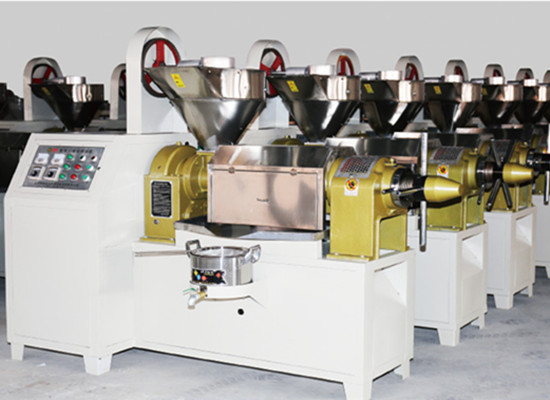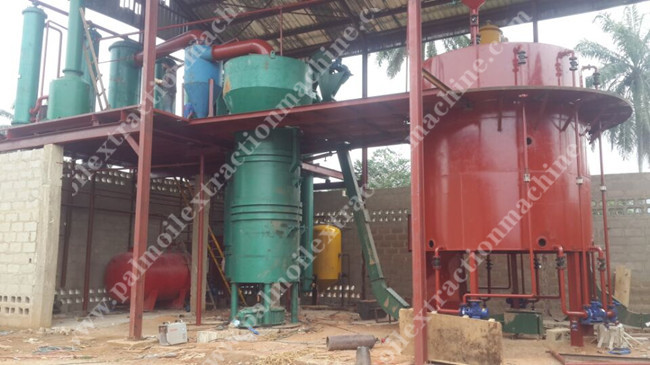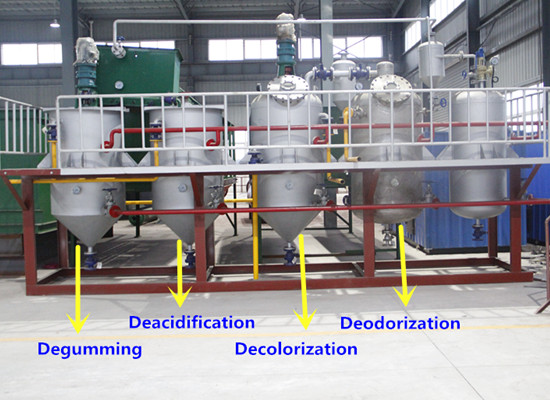Some vegetable oils, such as olive, peanut, and some coconut and sunflower oils, are cold-pressed. This method, which entails minimal processing, produces a light, flavorful oil suitable for some cooking needs. Most oil sources, however, are not suitable for cold pressing, because it would leave many undesirable trace elements in the oil, causing it to be odiferous, bitter tasting, or dark. These oils undergo many steps beyond mere extraction to produce a bland, clear, and consistent oil.
Cleaning
To remove the imputities and the metal in the oil seeds, which will be not harm the machine, and get high oil quality.

Cooking oil pressing machine
Pressing
The heated meal is then fed continuously into a screw press, which increases the pressure progressively as the meal passes through a slotted barrel. Pressure generally increases from 68,950 to 20,6850 kilopascals as the oil is squeezed out from the slots in the barrel, where it can be recovered.
Extracting additional oil with solvents
Soybeans are usually not pressed at all before solvent extraction, because they have relatively little oil, but most oil seeds with more oil are pressed and solvent-treated.

Cooking oil solvent extraction machine
Removing solvent traces
Ninety percent of the solvent remaining in the extracted oil simply evaporates, and, as it does, it is collected for reuse. The rest is retrieved with the use of a stripping column. The oil is boiled by steam, and the lighter hexane floats upward. As it condenses, it, too, is collected.
Refining the oil
The oil is next refined to remove color, odor, and bitterness. Refining consists of heating the oil to between 107 and 188 degrees Fahrenheit (40 and 85 degrees Celsius) and mixing an alkaline substance such as sodium hydroxide or sodium carbonate with it. Soap forms from the undesired fatty acids and the alkaline additive, and it is usually removed by centrifuge. The oil is further washed to remove traces of soap and then dried.

Cooking oil refining machine
Oils are also degummed at this time by treating them with water heated to between 188 and 206 degrees Fahrenheit (85 and 95 degrees Celsius), steam, or water with acid. The gums, most of which are phosphatides, precipitate out, and the dregs are removed by centrifuge.
Oil that will be heated (for use in cooking) is then bleached by filtering it through fuller's earth, activated carbon, or activated clays that absorb certain pigmented material from the oil. By contrast, oil that will undergo refrigeration (because it is intended for salad dressing, for example) is winterized—rapidly chilled and filtered to remove waxes. This procedure ensures that the oil will not partially solidify in the refrigerator.